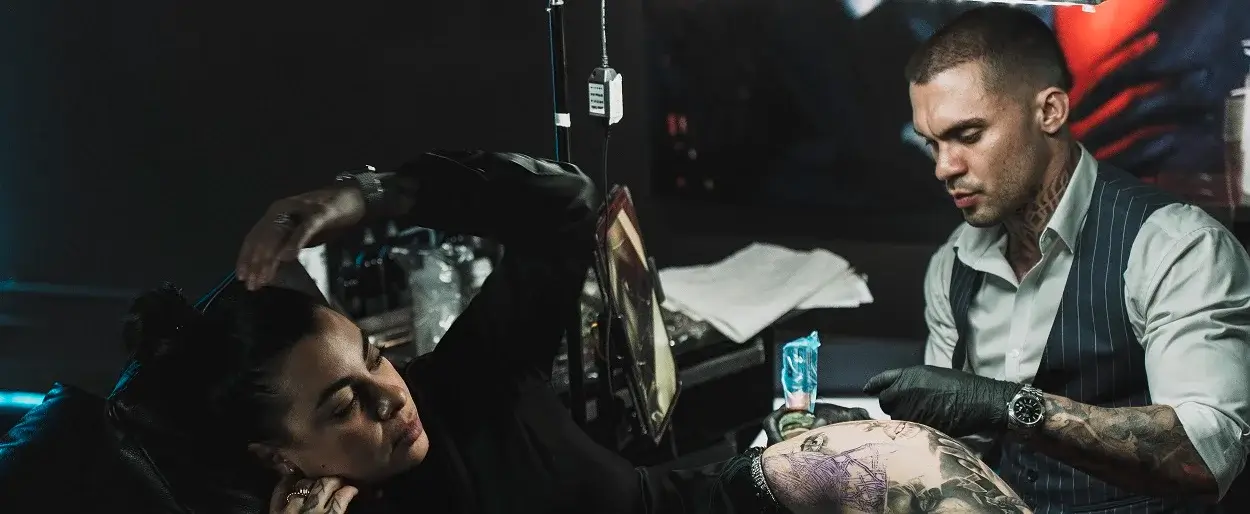Inked Mag Staff
July 20th, 2016
Propriety of Olympic Ink Questioned Amid Paralympics Tattoo Controversy
When British Paralympic swimming champ, Josef Craig, got a tattoo of a lion and the Olympic rings on his chest, he probably never expected the ink to get him disqualified…
When British Paralympic swimming champ, Josef Craig, got a tattoo of a lion and the Olympic rings on his chest, he probably never expected the ink to get him disqualified from a race. Unfortunately, because the International Paralympic Committee (IPC) considers Craig’s Olympic rings tattoo to be an advertisement, the swimmer was, in fact, disqualified from an IPC European Championships race in May, and now athletes competing in the 2016 Summer Olympics in Rio de Janeiro are wondering if their own tattoos will get them banned from the upcoming Games.
Nineteen-year-old Josef Craig, Great Britain’s youngest gold medalist at the 2012 London Paralympics, was scheduled to compete in the S8 100m freestyle final at the IPC Swimming European Open Championships this Spring, when he was disqualified for his chest tattoo of the Olympic rings, which the IPC considers “exclusive property of the International Olympic Committee.” Fortunately for Craig, he was able to cover up his chest tattoo in time for his S8 400m freestyle final, and was permitted to continue competing at the event, but the rings portion of the tattoo had to remain hidden throughout.
Getting a tattoo of the iconic Olympic rings is a rite of passage for those talented enough to compete at such a high level, and many champion athletes, including medalists Michael Phelps, Ryan Lochte, Gus Kenworthy and Missy Franklin, have tattoos of the five rings. However, while Craig was disqualified for his rings chest tattoo, the propriety of such ink doesn’t appear to be an issue for athletes competing in the Summer Games in Rio. According to a spokesperson for the International Olympic Committee (IOC), “The president is always excited to see athletes with the Olympic Rings. Standing alone, the Olympic Rings are a great expression of appreciation of the Olympic Games and of the Olympic values.”

According to reports, it was because the Paralympic Games and the Olympic Games are two separate events run by different committees, that Craig’s Olympic rings tattoo was considered an advertisement. According to IPC rules, athletes competing in the Games are not allowed to display advertisements on their bodies, including tattoos, and it was because Craig failed to cover up the rings portion of his chest tattoo that he was disqualified from the European Championships race. “All teams are informed of the advertising policy at a technical meeting prior to competition,” an IPC spokesperson said, “so it wasn’t as if they had not been reminded about the rules.”
As far as the IOC is concerned though, personal tattoos, including tattoos featuring the Olympic rings, are fair game, and do not need to be covered up during the 2016 Summer Games. However, athletes who have tattoos that advertise a product, will, like Craig, have to cover up their ink while competing in Rio this August. The same goes for Olympic athletes who have sold advertising space on their bodies in the form of tattoos, temporary or otherwise.

Editor's Picks
Bridging Classical Art and Modern Tattooing
Esteban Rodriguez brings the discipline of classical fine art to the living canvas of skin, creating hyper-realistic tattoos that merge technical mastery with emotional depth.
Show Your Ink Fashions Brings Custom Style to Tattoo Culture
Show Your Ink Fashions creates custom shirts designed to showcase your tattoos as wearable art, blending fashion with personal expression.
The Ultimate “Superman” Tattoo Roundup: Just in Time for Superman’s Return to Screens
With Superman’s big return to theaters, fans are revisiting some of the most iconic ink inspired by the Man of Steel.














